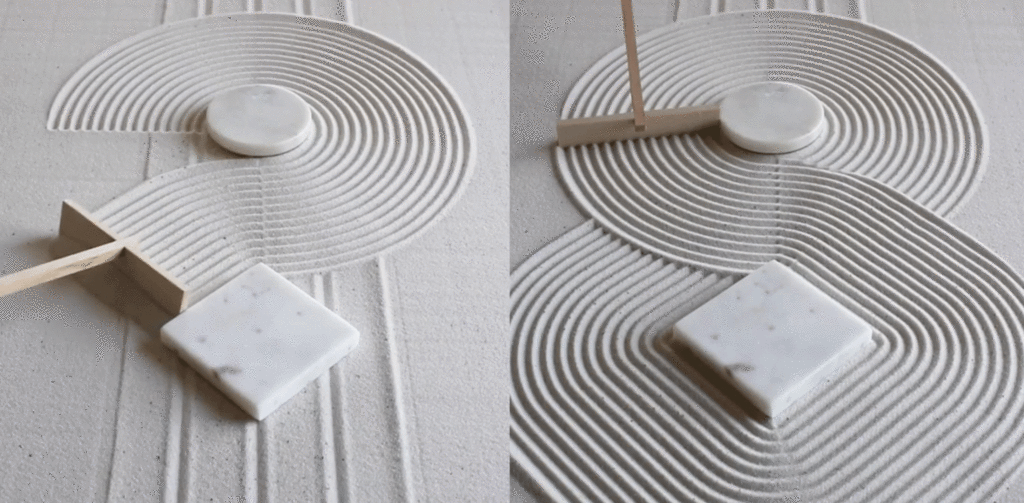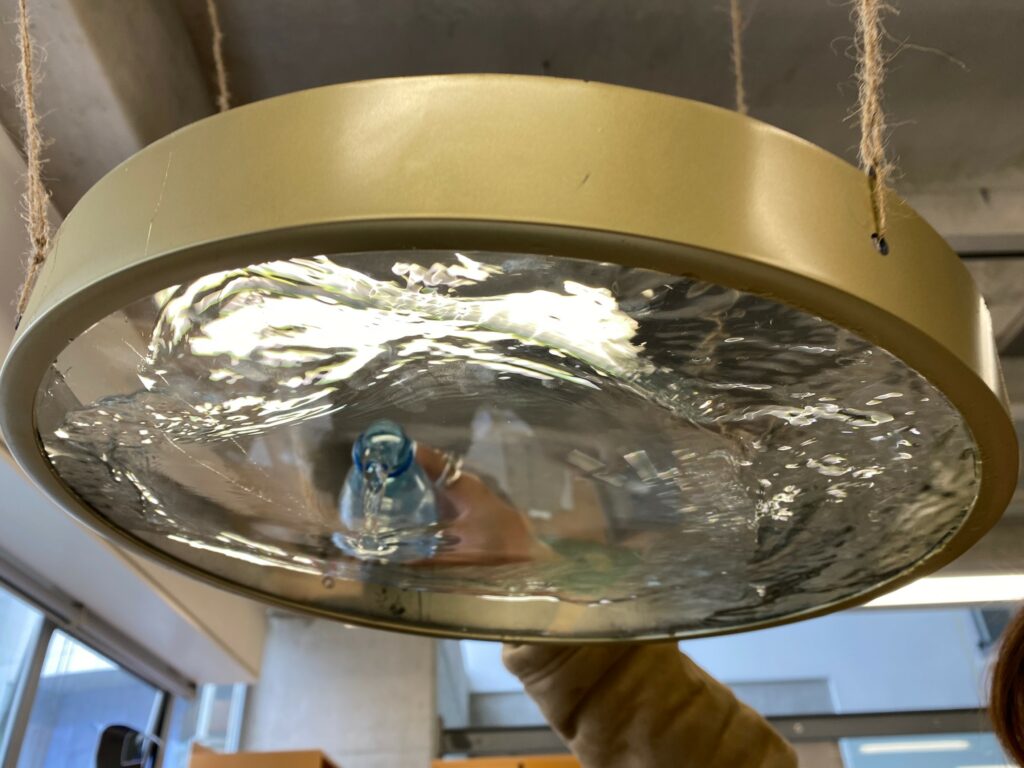Over the weekends, I was able to get a larger clock to experiment with. After talking to each other and our lecturers, we found that we needed to come up with an idea that will extend further. How can we still use the clock mechanism in a new, different way? How can we utilise other materials to make interesting marks?
What we realised through all of our trials it that the paint against the foam board created permanent marks as it ticked around. This made me think of surfaces we can work with. We created another clock with a layer of sand as the surface so the plant will act as a rake and make clean dents as it circles around. This reminds me of the Japanese zen gardens where rakes are used to create perfect linear designs on the sand. This is also a way to create temporary marks using the clock. With a simple shake, the raked designs will quickly disappear.
We looked into zen gardens and came across a zen garden artist called Yuki Kawae. Kawae creates beautiful, perfectly aligned linear designs on white sand, simply with a wooden rake. The act of moving a rake is an art machine itself. This act of moving a ridged piece of wood on fine sand can create so many interesting designs that can be erased in an instant. The plant on our clock arms functions exactly like a rake in a zen garden.

We also used this idea to incorporate the aspect of seasons into our machines. It all ties in with the idea of TIME. Cercadian time all revolve around nature, which revolves around the changing seasons and vice versa.
Our lecturer also told us an interesting aspect about clocks. Although clocks are mechanisms that operate with battery, it is the tiny crystals inside the mechanism which maintains a precise frequency standard, which helps to regulate the movement of a watch or clock, thus making the timepieces very accurate according to livescience.com. Hence why an average clock is called a ‘Quartz clock’. This made me realise that nature truly plays the biggest role in how time operates in our world.
We are constantly thinking of new ways to further extend our ideas and move on to create more. We thought of an idea to utilise the spare pieces of clocks that weren’t being used. Connecting to the sand idea and the beach/summer theme of the clock, we thought it would be interesting to put water in the cover of the clocks and let the light refract through the water. We thought that this will add visual aspects to our machine.

We tried to glue all the sides down with superglue, measured the strings, and hung them to the ceiling. We were hoping for it to stay on its own, slightly move around in the air and see the light refract on the clock/surface. However, we found it was too risky to balance all four strings in the clock cover with water in it, above our sand clock. Especially with the cover being glass and it having leaking areas, we decided to scrap the idea. Although we were let down by this, it helped us to take a step back and work on our actual clock art machines and stop overthinking. We decided that it is important to work hard on the idea that we’ve already had so many experiments with.
This error we encountered help us generate more ideas. Since this visual aspect didn’t work, how could we incorporate sound into our body of work? We looked around at the spare pieces that were around us and thought of the idea to make a sound-making machine. We did this using the two clock bases and the lids, then put sand in them so we can tilt/shake it to create wave-like sounds. We thought that this would be a simple idea that can also function as an art machine which ties into our other mark-making clocks which tell the concept of TIME and NATURE.
